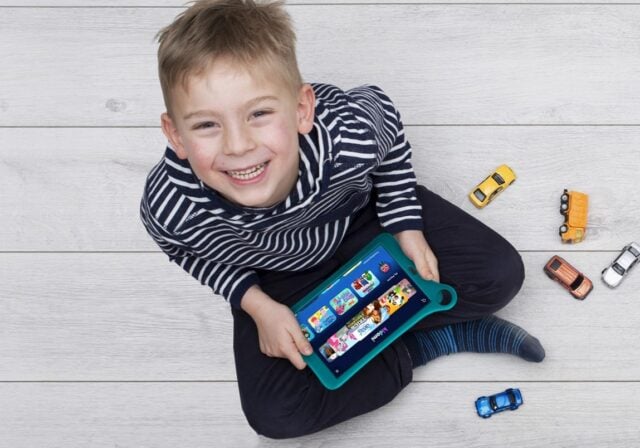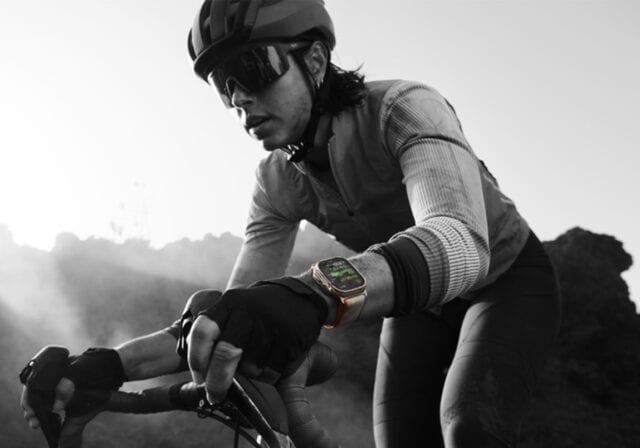Believe it or not, there was life before iPhones—although many Apple enthusiasts would argue differently. It was about two decades ago that Steve Jobs and his groundbreaking device would change the way the world stayed connected.
The First iPhone (1st Generation)
18 years ago on January 9, 2007, Apple CEO Steve Jobs introduced the first iPhone at Macworld in San Francisco. A few months later on June 29, 2007, it hit the market. Jobs described the groundbreaking phone—since there wasn't much else to compare it to—as a three-in-one device that combined the functionality of an iPod, with a mobile phone, with an internet communicator—all in one little sleek and lightweight package. For the first time, you could access your email and contacts on the go, not to mention take pictures, browse the web, and make your way around town with maps (minus the turn-by-turn instructions, of course). Best of all, you could use your finger to control it all! No other device on the market could do what it did. Here's how Jobs described it:
"iPhone is a revolutionary and magical product that is literally five years ahead of any other mobile phone… We are all born with the ultimate pointing device—our fingers—and iPhone uses them to create the most revolutionary user interface since the mouse."
Steve Jobs
Understandably, thousands of people lined up across the country to get their hands on this coveted new device—waiting in line for hours, even days (with a heavy police presence) outside Apple and other retail stores just to have one of their own.
No sharing or texting your pics. No app store yet. No pretty wallpapers. No Siri. No alternate color or design choices. It was just a tiny, chunky, silver phone with a black background—but no one knew what they were missing. After all, the phone had cutting-edge features at the time! Here are just a few of the first iPhone's specs:
- iPhone OS 1
- 3.5-inch Diagonal Display (320 x 480 pixels at 163ppi)
- 2-Megapixel Camera
- 4GB ($499) or 8GB ($599) Options
- 1,400mAh battery (8 hours of talk time)
- Visual Voicemail
- Safari Web Browser (with built-in Google and Yahoo! Search)
- SMS Application with full QWERTY soft keyboard
- Rich HTML email client
- Support for Quad-Band GSM, EDGE (2G) Wireless and Bluetooth 2.0
Of course, that's downright hilarious compared to what's baked-in to today's iPhones, including artificial intelligence (AI) and 5G capabilities, the latest and greatest Apple chips, professional-level cameras and video features, tons of storage, long-lasting batteries, not to mention huge, colorful displays, sleek designs, plus games and apps galore. In fact, let’s take a closer look at the evolution of iPhone to see just how much has changed between the first iPhone and today’s advanced models.
Then vs. now: The first Apple iPhone vs. today’s powerhouse devices
Back in 2007, the first iPhone was nothing short of revolutionary—but compared to what’s in your pocket today, it’s like comparing a flipbook to a feature film. Let’s explore just how far we’ve come.
Processing power
Then: A single-core processor with modest performance, just enough to handle email, phone calls, and simple apps.
Now: Modern iPhones run on multi-core processors with dedicated neural engines. They support advanced machine learning, augmented reality, and artificial intelligence. You can edit 4K videos, play console-quality games, and even do real-time language translation—all on a phone.
Cameras
Then: A single 2-megapixel camera with no flash, no zoom, and no video recording capability.
Now: Multi-lens systems with ultra-wide, telephoto, macro, and depth sensors. Phones now offer cinematic video modes, 4K recording, night photography, and professional-grade editing tools. Some are even being used to shoot films and documentaries.
Connectivity
Then: EDGE (2G) wireless, no GPS, and limited web browsing.
Now: Phones today support 5G, Wi-Fi 6 and beyond, Bluetooth 5+, precise GPS, and more. You can stream high-definition content, play cloud-based games, or download large files in seconds.
Battery and charging
Then: A 1,400mAh battery with roughly 8 hours of talk time and only cabled charging.
Now: Batteries are significantly larger, and smart optimization helps extend life throughout the day. Fast charging, wireless charging, and even magnetic accessories (e.g., MagSafe) make powering up faster and more flexible than ever.
Navigation and apps
Then: Maps with no real-time directions and no App Store.
Now: Real-time GPS, turn-by-turn navigation, public transit guidance, and augmented reality for walking directions. Plus, millions of apps now cover everything from fitness tracking to banking, meditation, and photo editing.
Display and design
Then: A 3.5-inch screen with a 163ppi pixel density.
Now: Edge-to-edge OLED or Super Retina displays, high refresh rates, HDR, and stunning color accuracy. Today’s phones are slimmer, more durable, and come in a variety of materials and finishes—some even fold or flip.
Security
Then: A four-digit passcode was your only line of defense.
Now: Phones use advanced biometrics like Face ID and fingerprint recognition, plus end-to-end encryption, app privacy controls, and on-device processing for sensitive data.
Communication
Then: SMS texting, voice calls, and basic email.
Now: High-quality video calls, real-time collaboration, voice messaging, group chats, emojis, gifs, reactions, and AI-powered suggestions. Communication today is visual, dynamic, and instantly global.
Voice and AI
Then: Your finger was the only input method.
Now: Voice assistants can schedule meetings, play music, answer questions, set reminders, translate languages, and even control your smart home.
How far we’ve come
If the original iPhone was like a digital Swiss Army knife, today’s models are more like pocket-sized supercomputers. They’re sleek, powerful, and packed with tools that were once unthinkable on a mobile device. So, what can we expect from Apple iPhones as we look ahead to the next decade or two? No one's exactly sure yet. But you can bet we'll be looking back and laughing about what we didn't have.
You May Also Be Interested In:
- Evolution of iPhone
- What is the Best iPhone of 2025? A Comprehensive Review of Our Top iPhone Picks
- iPhone 17 Series: Everything You Need to Know
- iPhone 17 Series vs. iPhone 16 Series: New Features, Specs, Price & Upgrade Guide
- Compare iPhone models
- Shop iPhone models
Sources:
https://www.apple.com/newsroom/2007/01/09Apple-Reinvents-the-Phone-with-iPhone/
https://www.thestreet.com/video/june-29-2007-apple-releases-the-iphone





